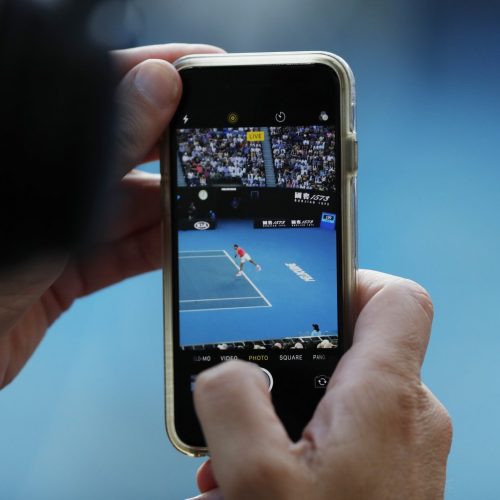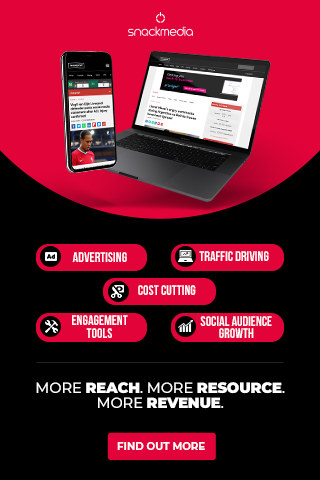Kick It Out: How charities can make an impact on Social Media
Guest Post: Hash Piperdy joined Kick It Out in May 2014 and assists with the organisation’s website and social media output. Kick It Out can be reached @KickItOut, while Hash tweets from @Codenamehash.
If you follow football, you’ve probably heard of Kick It Out, or I suppose our previous name, the organisation formerly known as Let’s Kick Racism Out of Football. I joined the charity in May, after deciding I wanted to work in football, I wanted to move to London, and I wanted to do some good. Kick It Out ticked all the boxes.
I was shocked when I got here. Without looking on our WordPress-built site, how many people do you think work at a national charity that works within football? As a clue, most people who phone us trying to sell us something make the same mistake…
Guess again?
Twelve.
As one national journalist put it, “Kick It Out is two rooms based above a Pizza Express in Clerkenwell.” In fairness, it’s a nice Pizza Express, but that probably wasn’t the point he was making.
My joining just before the World Cup allowed the organisation to take a different look at their social media. I’m part of a three-person team, the largest the media and communications team has ever been. I work with two very talented people with the correct qualifications and experience, whereas I’m a former agency worker with no journalism qualifications (I’ve got an Economics degree, which lets me work out why I’m always skint.)
What I am good at though, is social media. I used to manage the social media for a couple of (rival) rugby tournaments and a federation, coming up with innovative ideas and new ways to present information, all done for an agency that had never hired a ‘social media person’ before.
So my strength, obviously lay with the social media output for Kick It Out, and in general, how charities get their message across without being too preachy. After all, we’re perhaps seen as an annoyance by people and the less they hear from us, the better.
Those people are right to an extent. Myself and every one of my colleagues are working to put ourselves out of a job – if there was no discrimination in sport, we would not exist, and that’s fine with all of us.
Unfortunately, as much as social media exists as a force for good, it is also used as a weapon by those with less virtuous intentions. Last season, Kick It Out dealt with 142 incidents of football related hate crime on social media, that’s more than one every three days. And you will have of course seen the higher-profile incidents of discrimination in football.
So how do we as a charity get our message across in an attempt to cut through the Saturday afternoon bottleneck of scorching hot football takes that everyone else is sending? It’s actually not too different from my days at the agency, albeit with fewer resources and weapons of our own to deliver our message. With no budget, we’ve increased our followers across all networks by 21% in the 10 months I’ve been with the organisation.
Before we get into this, an obvious plug request to get involved with what we do by following us across Twitter, Instagram, and Facebook, as well as downloading our FREE app in case you encounter discrimination the next time you watch football. (Yes, the app has the old branding on it for now, such are the perils of charity!)

EVENTS = LIVE, ON SITE.
This one is a little incongruous with a social media strategy to an extent. We had one of our major events in October. We call it Raise Your Game. It’s a chance for people who want to work in almost any aspect of football to get face-to-face mentoring time with people who have been there and done it already. I’m obviously biased, but if the same thing had existed when I first started out, I’d have felt a lot more positive about my career choice.
For the event itself, we displayed a live blog on the screens and used that as our primary means of giving information. Our social media channels gave brief snippets with a call to action, namely to encourage people to click to our site, transferring the inevitable hits from social media to our website.
It also prevented the usual complaints about spamming a timeline through constant updates.
The old cliché about content being the most important thing on site is true. At the start of 2014, our bounce rate was an unbelievable 97%. Due to events like Raise Your game and a coherent content strategy, we’ve reduced it to under 2%.
SHAREABLE TILES OF DATA
Being a charity, we don’t have the resources to spend with a photo agency when searching for images of players for our social media. We survive off scraps from teams sending us images of players in our t-shirts and from images of our own events. It also means we don’t have a design team that we can rely on when we want to knock up an image.
Instead, we try to present statistics in a different way, or where we do have images, to ensure our logo is on there somewhere. The idea being that when people share our images, they share our logo at the same time. This also allows us to use our Instagram account, which remained dormant for a long time.
It’s easy to put something together and throw it on all three networks and we have been guilty of that, but there are plenty of freely available cheat sheets you can use to work out what the best size images are. We use squares for Facebook and Instagram, while for Twitter, an image twice as wide as it is high will ensure that it will be seen without the user needing to click through.
USE YOUR ARCHIVE
I’ve mentioned already about being a charity, and one of the drawbacks of going from agency to charity is the sudden lack of usable photos. No longer are the likes of Getty or Inpho readily available at 3am when you’re scheduling a story (note to last employer – this actually happened). Instead, clubs sometimes send us images of players warming up in Kick It Out t-shirts and we tuck them away in our archive until we need them for something.
But during the World Cup, we realised we had an opportunity to use this in a useful way. We took one image of a player or coach for each competing nation, and created a composite image that we posted before the game kicked off.
Despite the tournament not being in our jurisdiction, suddenly we had a quick and easy way to tie in with it and showcase some of the tournament’s players in our merchandise at the same time. The lesson here for charities is to use your archive of images to tie into current events to create content that adds value.
SOMETHING INTERACTIVE
One of the biggest challenges we face is that we have the perception that people only hear from us when something bad happens, so it’s important for us to change that view, while at the same time, keeping us at the forefront of people attending football, in case they see, hear, or witness discrimination at any level of the game.
I started to use #MyMatchdayView as a tag, which fulfilled every requirement. Was it simple to join in with? Was it portable? Was it something that was unique to us? We asked a few of our contacts offline to support us and it’s snowballed from there. We’ve had over 1,000 mentions of the tag so far this season, from games at all levels, from international fixtures to games played in the park.
See some of the best examples of #MyMatchdayView here: http://t.co/2f3gYRWkJK and contribute your own if you're watching football today!
— Kick It Out (@kickitout) January 31, 2015
We support that activity with retweets on matchdays and we use Storify on Monday mornings to aggregate the best shots.
We also use the tried-and-tested trick of “surprise and delight” offering t-shirts out of the blue to people that have supported our work.
#MyMatchdayView yesterday, @Corinthians v @CorinthianCas at @A_Corinthians what an amazing experience ❤️❤️ @kickitout pic.twitter.com/HeJCYrXJNL
— Hanna Newton (@HannaCNewton) January 25, 2015
DON’T FEED THE TROLLS
Sometimes it’s better not to say anything at all. We receive several legitimate complaints and for reasons of confidentiality, the most we’ll say is to acknowledge the complaint before reporting the act to the authorities, both sporting and legal.
With that said, there are a few… frequent fliers who create spam accounts for the sole purpose of trolling us or others. To them, we do nothing publically as we want to starve them of the oxygen that publicity gives them. Sometimes they’ll get their 15 retweets of fame and disappear again, but thanks to our good relationship with Twitter, we can flag abuse quickly and efficiently.
So to give this a really clickbaity title, I guess you could call it ‘five ways to get noticed if you’re a charity on social media’ but the point I’m trying to make is that all successful social media strategies have several common threads running through them – conversion, fan advocacy, information, and most importantly, silence.
About author
You might also like
Mallory Group Launches White Paper on the ‘New Normal’ for Sports Rights Holders
Sport is proving to be one of the high-profile business casualties of the Covid-19 pandemic. However, its slow and structured return will be a key factor in life entering the
The seven essentials for achieving successful sports branding
By Daniela McVicker When it comes to sports, great branding is a must. Your brand influences how people see your company or team. It helps you to forge connections with
Live Chat: A New Social Experience in Sports
Article written by John S. Kim, CEO and co-founder of global API company SendBird Social media rose to prominence throughout the world due to its potential for connection. Social channels provided the








